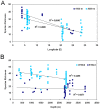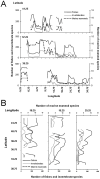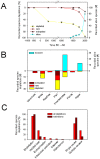The biodiversity of the Mediterranean Sea: estimates, patterns, and threats
- PMID: 20689844
- PMCID: PMC2914016
- DOI: 10.1371/journal.pone.0011842
The biodiversity of the Mediterranean Sea: estimates, patterns, and threats
Abstract
The Mediterranean Sea is a marine biodiversity hot spot. Here we combined an extensive literature analysis with expert opinions to update publicly available estimates of major taxa in this marine ecosystem and to revise and update several species lists. We also assessed overall spatial and temporal patterns of species diversity and identified major changes and threats. Our results listed approximately 17,000 marine species occurring in the Mediterranean Sea. However, our estimates of marine diversity are still incomplete as yet-undescribed species will be added in the future. Diversity for microbes is substantially underestimated, and the deep-sea areas and portions of the southern and eastern region are still poorly known. In addition, the invasion of alien species is a crucial factor that will continue to change the biodiversity of the Mediterranean, mainly in its eastern basin that can spread rapidly northwards and westwards due to the warming of the Mediterranean Sea. Spatial patterns showed a general decrease in biodiversity from northwestern to southeastern regions following a gradient of production, with some exceptions and caution due to gaps in our knowledge of the biota along the southern and eastern rims. Biodiversity was also generally higher in coastal areas and continental shelves, and decreases with depth. Temporal trends indicated that overexploitation and habitat loss have been the main human drivers of historical changes in biodiversity. At present, habitat loss and degradation, followed by fishing impacts, pollution, climate change, eutrophication, and the establishment of alien species are the most important threats and affect the greatest number of taxonomic groups. All these impacts are expected to grow in importance in the future, especially climate change and habitat degradation. The spatial identification of hot spots highlighted the ecological importance of most of the western Mediterranean shelves (and in particular, the Strait of Gibraltar and the adjacent Alboran Sea), western African coast, the Adriatic, and the Aegean Sea, which show high concentrations of endangered, threatened, or vulnerable species. The Levantine Basin, severely impacted by the invasion of species, is endangered as well. This abstract has been translated to other languages (File S1).
Conflict of interest statement
Figures














Similar articles
-
Hydroids (Cnidaria, Hydrozoa) from Mauritanian Coral Mounds.Zootaxa. 2020 Nov 16;4878(3):zootaxa.4878.3.2. doi: 10.11646/zootaxa.4878.3.2. Zootaxa. 2020. PMID: 33311142
-
Are Mediterranean marine threatened species at high risk by climate change?Glob Chang Biol. 2023 Apr;29(7):1809-1821. doi: 10.1111/gcb.16577. Epub 2023 Jan 19. Glob Chang Biol. 2023. PMID: 36583369
-
Deep-sea biodiversity in the Mediterranean Sea: the known, the unknown, and the unknowable.PLoS One. 2010 Aug 2;5(8):e11832. doi: 10.1371/journal.pone.0011832. PLoS One. 2010. PMID: 20689848 Free PMC article.
-
Bioindicators for monitoring marine litter ingestion and its impacts on Mediterranean biodiversity.Environ Pollut. 2018 Jun;237:1023-1040. doi: 10.1016/j.envpol.2017.11.019. Epub 2017 Nov 16. Environ Pollut. 2018. PMID: 29153726 Review.
-
Marine biodiversity in the Caribbean: regional estimates and distribution patterns.PLoS One. 2010 Aug 2;5(8):e11916. doi: 10.1371/journal.pone.0011916. PLoS One. 2010. PMID: 20689856 Free PMC article. Review.
Cited by
-
Wild whale faecal samples as a proxy of anthropogenic impact.Sci Rep. 2021 Mar 12;11(1):5822. doi: 10.1038/s41598-021-84966-4. Sci Rep. 2021. PMID: 33712645 Free PMC article.
-
New records of amphipod crustaceans along the Israeli Mediterranean coast, including a rare Mediterranean endemic species, Maera schieckei Karaman & Ruffo, 1971.Biodivers Data J. 2020 Jul 31;8:e53864. doi: 10.3897/BDJ.8.e53864. eCollection 2020. Biodivers Data J. 2020. PMID: 32831549 Free PMC article.
-
Resistomycin Suppresses Prostate Cancer Cell Growth by Instigating Oxidative Stress, Mitochondrial Apoptosis, and Cell Cycle Arrest.Molecules. 2023 Nov 30;28(23):7871. doi: 10.3390/molecules28237871. Molecules. 2023. PMID: 38067602 Free PMC article.
-
Can Biological Traits Serve as Predictors for Fishes' Introductions, Establishment, and Interactions? The Mediterranean Sea as a Case Study.Biology (Basel). 2022 Nov 7;11(11):1625. doi: 10.3390/biology11111625. Biology (Basel). 2022. PMID: 36358326 Free PMC article.
-
Effect of tourist activity on wastewater quality in selected wastewater treatment plants in the Balearic Islands (Spain).Environ Sci Pollut Res Int. 2024 Feb;31(10):15172-15185. doi: 10.1007/s11356-024-32173-9. Epub 2024 Jan 30. Environ Sci Pollut Res Int. 2024. PMID: 38289556 Free PMC article.
References
-
- NOAA, National Oceanic and Atmospheric Administration. 2009. Large marine ecosystems Web page: http://www.lme.noaa.gov/. The Mediterranean LME. Accessed December, 2009.
-
- Bethoux JP. Budgets of the Mediterranean Sea - Their dependance on the local climate and on the characteristics of the Atlantic waters. Oceanologica Acta. 1979;2:157–163.
-
- Hopkins TS. Physics of the sea. In: Margalef R, editor. Key environments: Western Mediterranean. New York: Pergamon Press; 1985.
-
- Pinardi N, Arneri E, Crise A, Ravaioli M, Zavatarelli M. Robinson AR, Brink KA, editors. The physical, sedimentary and ecological structure and variability of shelf areas in the Mediterranean sea (27). The Sea Harvard University Press. 2006. pp. 1245–1331.
-
- Bas C. The Mediterranean: A synoptic overview. Contributions to Science. 2009;5:25–39.
Publication types
MeSH terms
LinkOut - more resources
Full Text Sources

